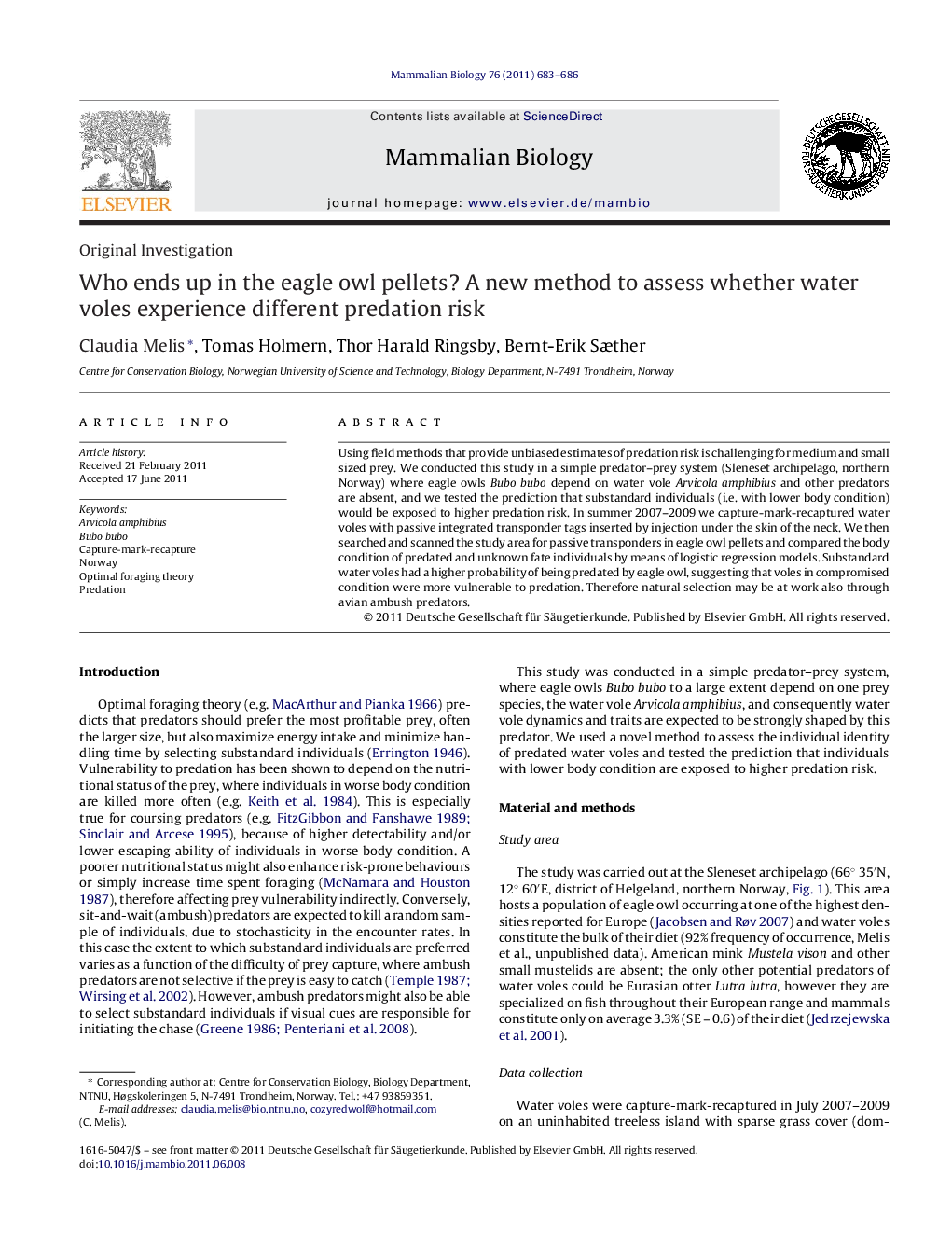| Article ID | Journal | Published Year | Pages | File Type |
|---|---|---|---|---|
| 2193872 | Mammalian Biology - Zeitschrift für Säugetierkunde | 2011 | 4 Pages |
Using field methods that provide unbiased estimates of predation risk is challenging for medium and small sized prey. We conducted this study in a simple predator–prey system (Sleneset archipelago, northern Norway) where eagle owls Bubo bubo depend on water vole Arvicola amphibius and other predators are absent, and we tested the prediction that substandard individuals (i.e. with lower body condition) would be exposed to higher predation risk. In summer 2007–2009 we capture-mark-recaptured water voles with passive integrated transponder tags inserted by injection under the skin of the neck. We then searched and scanned the study area for passive transponders in eagle owl pellets and compared the body condition of predated and unknown fate individuals by means of logistic regression models. Substandard water voles had a higher probability of being predated by eagle owl, suggesting that voles in compromised condition were more vulnerable to predation. Therefore natural selection may be at work also through avian ambush predators.
